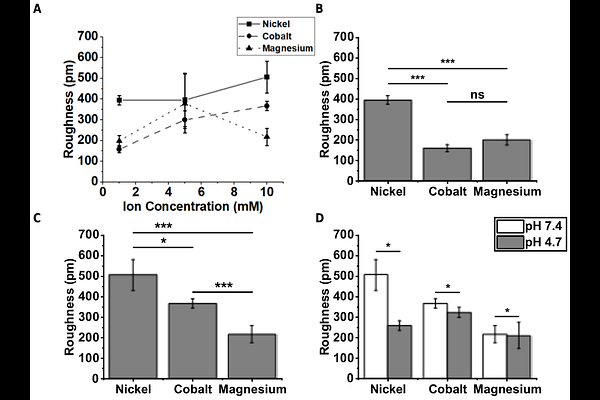Co2+-mediated adsorption facilitates atomic force microscopy of DNA molecules at double-helix resolution

Co2+-mediated adsorption facilitates atomic force microscopy of DNA molecules at double-helix resolution
Pailing, M.; Maia de Oliveira, T.; Flocco, M.; Hoogenboom, B. W.
AbstractAtomic force microscopy (AFM) has demonstrated the ability to resolve single DNA molecules in liquid at a spatial resolution that is sufficient to visualize the double helix structure and variations therein. Such variations can be due to inherent configurational flexibility and may be related to, e.g., DNA sequence, ionic screening, supercoiling, or protein binding. These AFM experiments require DNA to be adhered to a solid and preferably flat support. For high-resolution, in-liquid AFM studies so far, such adhesion has commonly been achieved using Ni2+ ions to electrostatically bridge between the negatively charged DNA and a negatively charged, atomically flat mica surface, yet Ni2+ ions tend to cause precipitation of salts on the surface, increasing the risk of AFM tip contamination and increasing the corrugation of the support surface, making it harder to distinguish secondary DNA structure. Here, we report on a sample preparation protocol that, instead, relies on Co2+ ions to adhere DNA to mica. While the Co2+ is similarly effective as Ni2+ for facilitating DNA adsorption onto mica, it leads to significantly reduced salt precipitation with the potential to provide enhanced reproducibility in high-resolution DNA imaging by AFM. We expect this to substantially facilitate high-resolution AFM studies of DNA in aqueous solutions.